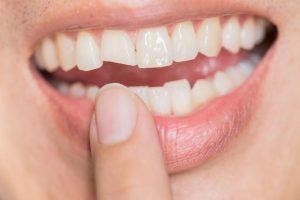Oral health is crucial for overall well-being, and addressing dental problems promptly is important to prevent them from worsening. Dental emergencies can arise from various factors, including accidents, infections, severe pain, or damage to the teeth, gums, or jaw. In such situations, seeking immediate treatment from an emergency dentist on the Sunshine Coast is vital to alleviate pain, prevent further damage, and ensure the best possible outcome for your oral health.
This blog article will teach us what to do if you need emergency dental treatment. I will help to manage your dental emergencies.
What Causes Dental Emergency?
Dental emergencies can occur due to various causes. Here are some common factors that can lead to dental emergencies:
- Trauma or accidents: Dental emergencies can be caused by injuries or accidents that damage teeth, gums, or jaw. Falls, sports-related injuries, vehicle accidents, or any impact to the face can lead to knocked-out teeth, fractured teeth, or other dental injuries requiring immediate attention.
- Untreated dental problems: Ignoring or neglecting dental issues can eventually lead to emergencies. Dental problems such as untreated tooth decay, gum disease, or infected teeth can progress and cause severe pain, abscesses, or other complications that require immediate treatment.

- Oral infections: Infections in the teeth or gums can cause dental emergencies. An untreated infection can lead to an abscess, which is a collection of pus that forms at the root of the tooth or in the gums. Abscesses can cause severe pain and swelling and potentially spread to other areas of the face or body if left untreated.
- Dental procedures: Although rare, dental emergencies can occur during or after certain procedures. Complications such as excessive bleeding, severe pain, or damage to surrounding tissues may arise. These situations require immediate attention to address the issue and ensure proper healing.
- Dental appliance issues: Problems with dental appliances like braces, retainers, or dentures can also lead to dental emergencies. Dislodged or broken orthodontics wires, loose brackets, or denture fractures can cause discomfort, pain, or injury to the oral tissues.
- Teeth grinding (bruxism): Chronic teeth grinding can lead to dental emergencies. Grinding or clenching the teeth excessively can cause tooth fractures, chipped teeth, or jaw pain. If bruxism is severe or uncontrolled, it can result in dental emergencies that require immediate treatment.
It’s important to note that maintaining regular dental check-ups, practising good oral hygiene, and addressing dental issues promptly can significantly reduce the risk of dental emergencies. Regular preventive care and timely treatment of dental problems can help prevent emergencies from occurring in the first place.
What are the Common Dental Emergencies?
Some common dental emergencies that require urgent dental care include:
- Toothaches: Severe toothaches can be caused by tooth decay, abscesses, gum infections, or other underlying dental problems. Persistent and intense tooth pain often requires immediate attention to relieve the discomfort and address the underlying issue.
- Knocked-out tooth: When a tooth is completely knocked out due to trauma or injury, it is essential to seek immediate dental care. If possible, carefully handle the tooth by the crown (avoid touching the root), rinse it gently with water if it’s dirty, and try to reinsert it into the socket. If reinsertion isn’t possible, promptly place the tooth in milk or a tooth preservation solution and visit an emergency dentist. Quick action increases the chances of saving the tooth.

- Chipped or fractured tooth: A chipped or fractured tooth can cause pain, sensitivity, and potential damage to the inner layers of the tooth. Depending on the severity and location of the fracture, an emergency dentist may use dental bonding, a dental crown, or other appropriate treatments to restore the tooth’s structure and function.
- Partially dislodged (extruded) tooth: When a tooth becomes partially dislodged or pushed out of its normal position, it requires immediate attention to stabilise and prevent further damage. An emergency dentist can carefully reposition and splint the tooth to facilitate proper healing.
- Dental abscess: A dental abscess is a bacterial infection characterised by a pus-filled pocket that forms in the tooth or gums. It can cause severe pain, swelling, facial redness, and fever. Prompt dental care is necessary to address the infection, relieve pain, and prevent its spread to other body parts.
- Lost dental filling or crown: If a dental filling or crown falls out, it can cause sensitivity, pain, and potential damage to the affected tooth. Seeking prompt dental care is important to replace or repair the restoration and protect the tooth from further harm.
- Soft tissue injuries: Injuries to the soft tissues of the mouth, such as the lips, tongue, or gums, can result in bleeding, lacerations, or tears. Immediate attention from an emergency dentist is required to assess the extent of the injury and provide appropriate treatment.
- Broken orthodontic appliances: Issues with braces, retainers, or other orthodontic appliances can occur, such as loose brackets, broken wires, or discomfort from adjustments. Contacting an orthodontist promptly is important to address the problem and prevent further complications.
These are common dental emergencies, but it’s important to remember that any dental problem causing severe pain, significant bleeding, or interfering with normal oral function should be considered a potential emergency. In such situations, seeking immediate professional dental care is crucial for timely and appropriate treatment.
What Should Be Done if You Need Emergency Dental Treatment?
If you require emergency dental treatment, acting quickly to address the issue and minimise any potential complications is essential. Here are the steps you should take:
- Contact your dentist: Call your regular dentist’s office first, even if it’s outside regular business hours. Many dental practices have emergency provisions or an after-hours line where you can reach a dentist or receive instructions on what to do.
- Explain the situation: Describe your symptoms, pain level, and any visible issues to the dental staff. It will help them determine the severity of your situation and provide appropriate guidance.
- Follow the dentist’s instructions: The dental staff will advise you on the next steps based on your symptoms. They may offer immediate treatment or suggest measures to alleviate pain or discomfort until you can see a dentist. Follow their instructions carefully.
- Seek emergency dental care: If your regular dentist cannot accommodate you or the situation is severe, consider seeking emergency dental care. Look for emergency dental clinics or hospitals in your area with dental services. Some cities have dedicated emergency dental clinics available.
- Explain the situation again: When you visit the emergency dental care provider, explain your symptoms and the situation to the dentist or dental staff. Please provide any relevant details to help them assess your condition accurately.
- Cooperate with the dental professional: Follow the instructions provided by the dentist during your visit. They may perform necessary treatments to address the emergency, such as tooth extraction, filling, or other procedures.
- Follow-up care: After receiving emergency treatment, follow any post-treatment instructions given by the dentist. If additional appointments or procedures are required, schedule and attend them accordingly.
Remember, dental emergencies can vary in severity, ranging from severe toothache and broken teeth to dental abscesses or injuries. Prompt action and professional care are crucial to prevent further complications and ensure the best possible outcome. You can contact your local emergency dentist Sunshine Coast for an expected solution for your dental issues.





